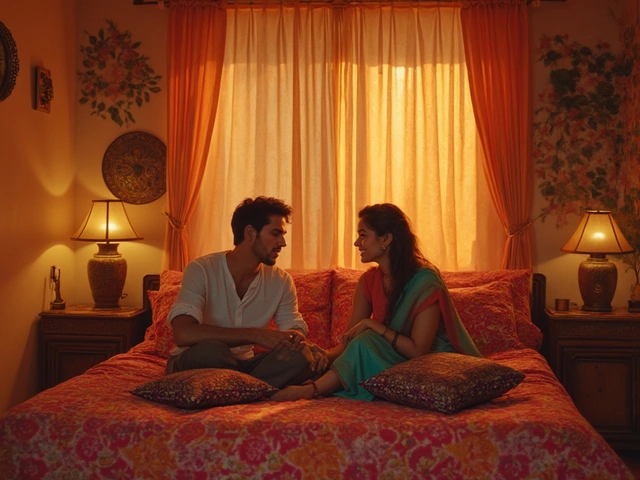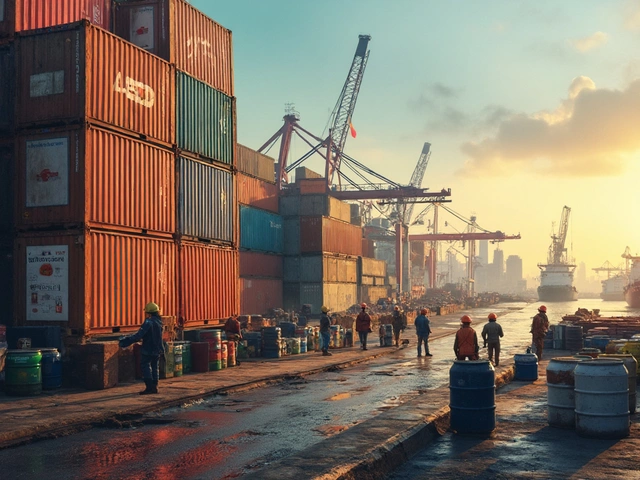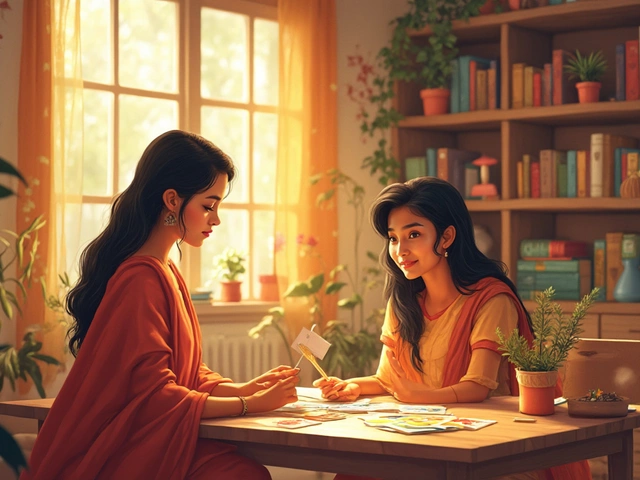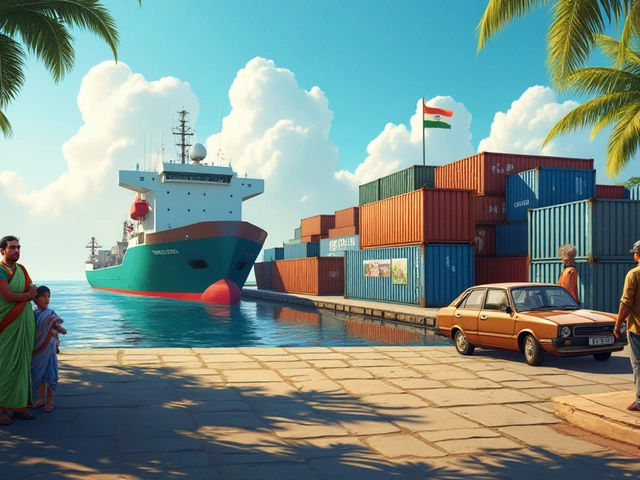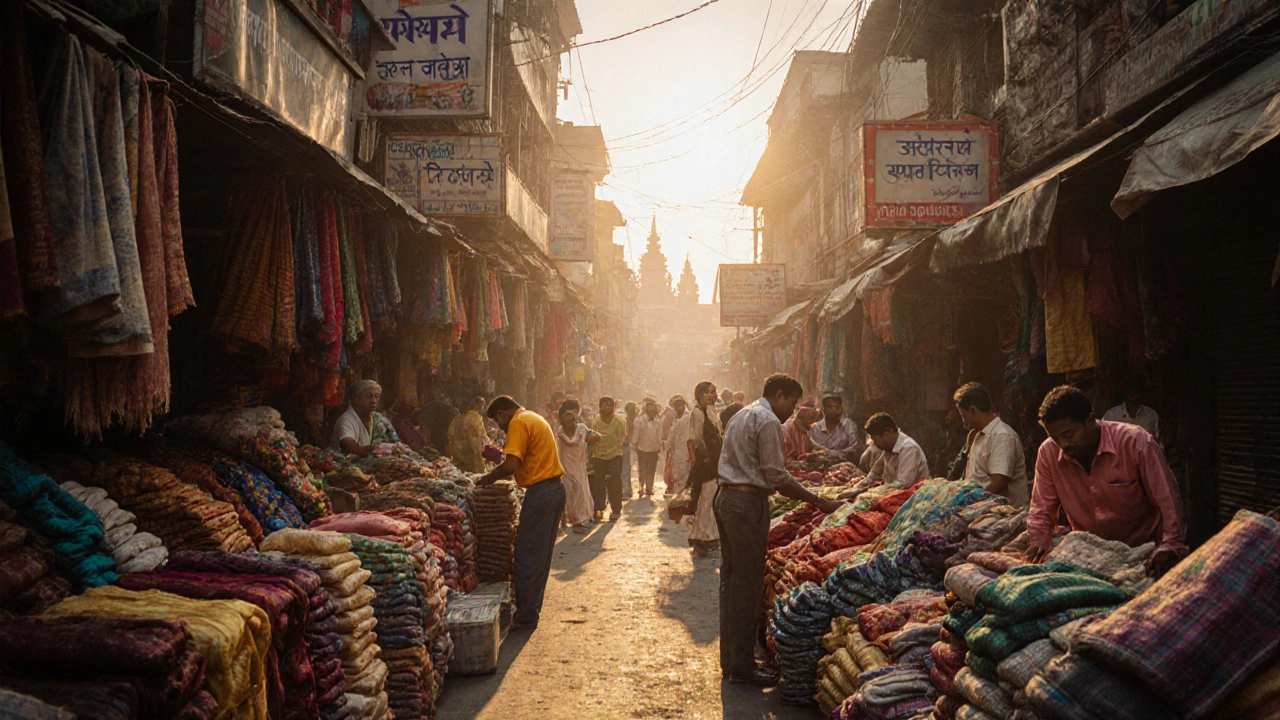
Mumbai Fabric Selector
Find Your Perfect Fabric
Select your requirements to get personalized recommendations for Mumbai's famous textiles.
Recommended Fabrics
Select your preferences to see recommended fabrics.
Your selected budget range: ₹250-₹3,500
Ever walked through Mumbai’s bustling streets and wondered which fabric the locals swear by? In a city that fuels Bollywood, hosts massive wholesale markets, and blends tradition with modern fashion, the answer isn’t a single material but a handful of textiles that have become iconic. This guide breaks down the most celebrated fabrics you’ll encounter in Mumbai, explains why they matter, and shows you exactly where to snag authentic pieces.
Understanding Mumbai’s Textile Landscape
At the heart of this fashion capital lies the Mumbai textile market is a sprawling network of wholesale hubs, showrooms, and designer studios that supply fabrics to retailers across India and abroad. The city’s strategic port, historic trading routes, and a consumer base hungry for new trends make it a magnet for fabric manufacturers. From centuries‑old handlooms to high‑tech weaving units, the market offers everything from budget cotton to luxury silk.
1. Khadi - The Eco‑Friendly Icon
Khadi is a hand‑spun, hand‑woven natural cotton fabric that originated in India during the independence movement, symbolizing self‑reliance and sustainability. In Mumbai, Khadi has found a niche among eco‑conscious shoppers and designers seeking a breathable yet sturdy material for summer kurtas, shirts, and even home textiles.
- Fiber: 100% organic cotton (sometimes blended with silk for a subtle sheen)
- Typical price: ₹250‑₹500 per meter, depending on weave density
- Best uses: Casual wear, traditional attire, hand‑crafted home décor
- Seasonal suitability: Perfect for hot and humid weather thanks to its breathability
2. Paithani Silk - Royal Heritage
Paithani silk is a premium silk fabric originally woven in the Paithan region of Maharashtra, famous for its intricate gold‑thread motifs and vibrant colors. Though its roots lie far from Mumbai, the city’s affluent clientele and bridal market have turned Paithani into a must‑have for weddings and formal occasions.
- Fiber: Pure mulberry silk with zari (gold or silver) embroidery
- Typical price: ₹1,200‑₹3,500 per meter, varying with design complexity
- Best uses: Bridal sarees, gala gowns, high‑end suiting
- Seasonal suitability: Suitable year‑round due to silk’s natural temperature regulation
3. Georgette - Bollywood’s Go‑to
Georgette is a lightweight, crinkled fabric made from silk or polyester, prized for its fluid drape and ability to hold elaborate embellishments. Production houses and costume designers in Mumbai rely on Georgette for glamorous gowns, dance costumes, and evening wear seen on the silver screen.
- Fiber: Silk (premium) or polyester (budget)
- Typical price: ₹400‑₹900 per meter for silk, ₹150‑₹300 for polyester blends
- Best uses: Evening dresses, party wear, costume design
- Seasonal suitability: Ideal for cooler evenings and indoor events
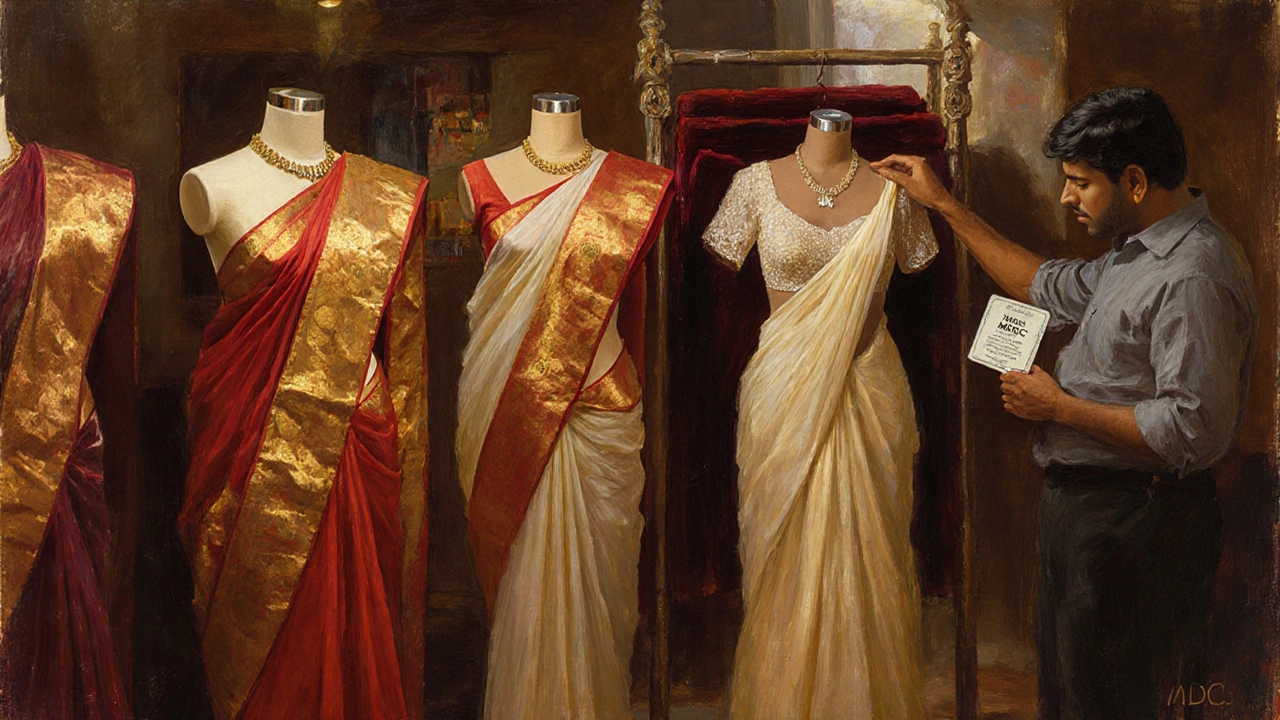
4. Linen - Summer Essential
Linen is a natural textile woven from flax fibers, known for its high breathability, moisture‑wicking properties, and timeless, casual elegance. Mumbai’s coastal climate makes linen a top pick for casual shirts, blouses, and summer suits, especially among the city’s young professional crowd.
- Fiber: 100% flax (sometimes blended with cotton for added softness)
- Typical price: ₹350‑₹800 per meter, depending on weave and finish
- Best uses: Casual shirts, summer blazers, summer home décor
- Seasonal suitability: Best for hot, humid months where airflow is a priority
Where to Shop: Mumbai’s Major Fabric Hubs
Finding authentic Mumbai fabrics is easier when you know the right neighborhoods. Below are the most reputable wholesale and retail destinations.
- Crawford Market is one of Mumbai’s oldest markets, offering a mix of wholesale textiles, especially cotton and synthetic blends, at competitive rates.
- Mangaldas Market is the city’s premier hub for silk and fine fabrics, where traders from Paithani, Banarasi, and other luxury silks gather daily.
- Dadar Wholesale Market is known for bulk sales of Georgette, chiffon, and synthetic fabrics catering to costume manufacturers.
- Bandra Cotton Market is a specialized area focusing on high‑quality cotton, including Khadi and hand‑loomed varieties.
The Maharashtra State Textile Development Corporation (MSTDC) is a government body that supports local weavers, offers certification for authentic fabrics, and runs outreach programs for exporters. Visiting MSTDC‑affiliated showrooms can guarantee you’re buying genuine, ethically produced textiles.
Quick Comparison of Mumbai’s Signature Fabrics
| Fabric | Fiber Type | Typical Use | Price Range (₹/meter) | Seasonal Suitability |
|---|---|---|---|---|
| Khadi | Cotton (hand‑spun) | Casual wear, traditional attire | 250‑500 | Hot/humid |
| Paithani Silk | Mulberry silk with zari | Bridal, gala | 1,200‑3,500 | All seasons |
| Georgette | Silk or polyester | Evening wear, costumes | 150‑900 | Cooler evenings |
| Linen | Flax (pure or blended) | Casual shirts, summer suits | 350‑800 | Hot, humid |
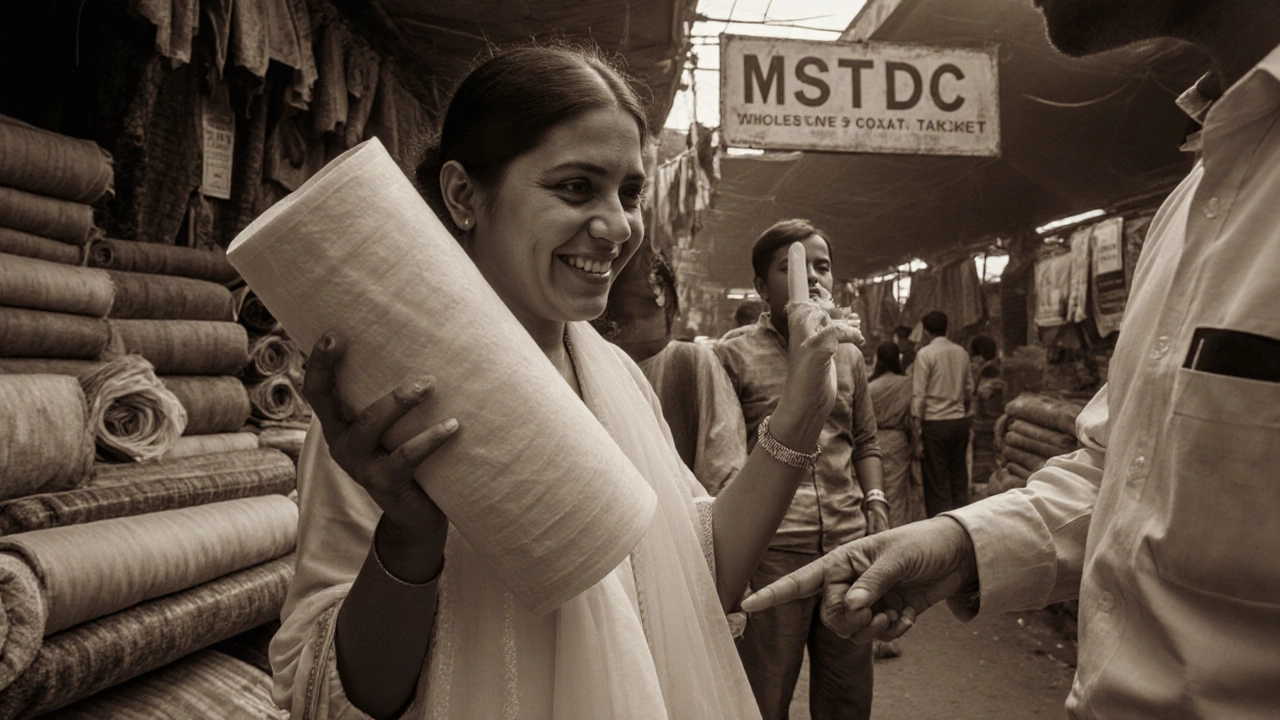
Tips for Choosing the Right Fabric in Mumbai
- Know the climate. Opt for breathable cotton or linen during monsoon and summer; reserve silk or Georgette for indoor events.
- Check certifications. Look for MSTDC or GI (Geographical Indication) tags on Paithani and Khadi to avoid counterfeits.
- Feel the drape. Authentic Georgette should have a slight sheen and fluid movement; cheap polyester versions feel stiff.
- Bargain wisely. Wholesale markets allow 10‑15% price negotiation, especially if you’re buying in bulk.
- Mind the care label. Silk and linen need dry‑cleaning or gentle hand‑wash; cotton and Khadi can be machine‑washed on a gentle cycle.
Common Pitfalls and How to Avoid Them
Even seasoned shoppers can fall into traps. Here are the most frequent issues and quick fixes.
- Fake silk. Low‑price “silk” that feels plasticky is usually polyester. Verify by feeling the fibers-natural silk should be smooth, slightly cool, and emit a faint scent when rubbed.
- Improper measurements. Delhi‑origin markets often quote length in meters but sell in uneven rolls. Always ask for the exact cut and ask for a reference swatch.
- Seasonal mismatches. Wearing heavy Khadi in June can be uncomfortable. Pair lighter blends or switch to linen for peak summer.
- Negotiation missteps. Insist on a price reduction before inspecting the fabric; sellers may stop the deal. Instead, inspect first, then negotiate.
Next Steps for the Curious Shopper
If you’re ready to explore Mumbai’s textile scene, start with a short trip to Crawford Market for cotton basics, then head to Mangaldas for silk splurges. Bring a trusted friend who can help you spot authentic GI tags, and don’t be shy about haggling. By understanding each fabric’s heritage, price point, and ideal use, you’ll walk away with pieces that feel authentic, look great, and last long.
Frequently Asked Questions
What makes Khadi different from regular cotton?
Khadi is hand‑spun and hand‑woven, meaning each thread is produced manually. This gives it a unique texture, higher breathability, and a strong cultural identity tied to India’s independence movement.
Where can I find genuine Paithani silk in Mumbai?
The most reliable spots are Mangaldas Market and boutique showrooms that display the MSTDC certification label. Look for the hallmark gold zari patterns that are hand‑embroidered.
Is Georgette suitable for everyday wear?
Because Georgette is lightweight and drapes well, it can be used for casual dresses in cooler months, but it’s best reserved for events where a slightly formal look is desired.
How do I care for linen garments?
Linen prefers a gentle hand wash or a machine cycle on cold, followed by air drying. Iron while still damp to avoid harsh wrinkles.
Can I buy these fabrics online?
Many Mumbai sellers now ship via e‑commerce platforms, but for high‑value items like Paithani silk, visiting the market in person ensures authenticity and lets you negotiate price.
